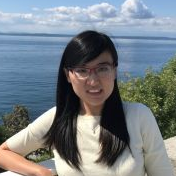Advanced Learning Techniques for Remote Sensing Image Quality Improvement
A special issue of Remote Sensing (ISSN 2072-4292). This special issue belongs to the section "Remote Sensing Image Processing".
Deadline for manuscript submissions: closed (31 August 2023) | Viewed by 20353
Special Issue Editors
Interests: computer vision and related applications in remote sensing; self-driving; video games
Special Issues, Collections and Topics in MDPI journals
Interests: crop yield prediction and phenotyping
Special Issues, Collections and Topics in MDPI journals
Interests: image processing; pattern recognition; computer vision; machine learning; remote sensing; aerospace exploration
Special Issues, Collections and Topics in MDPI journals
Interests: remote sensing image understanding; hyperspectral image processing; artificial intelligence oceanography
Special Issues, Collections and Topics in MDPI journals
Special Issue Information
Dear Colleagues,
Remote sensing image quality improvement, e.g., image super-resolution, image fusion, and image deblurring, are important foundations and prerequisites for many downstream remote sensing applications. In recent years, although substantial progress has been made in the above directions, there are still some open problems and challenges, such as how recent learning techniques (e.g., deep learning, generative neural networks) reshape and benefit remote sensing image processing, how to effectively evaluate the quality of remote sensing images, and how to deal with the rapidly growing data volume as well as their diverse modalities.
In this Special Issue, we invite you to submit the most recent advancements of this field in terms of methodological contributions as well as innovative applications. The potential topics may include but are not limited to:
- Remote sensing image super-resolution;
- Image registration and pan-sharpening;
- Hyperspectral image denoising;
- Remote sensing image deblurring and dehazing;
- Deep-learning-based remote sensing image processing;
- Multimodal data fusion between hyperspectral imagery with other data sources;
- Cloud detection and removal in remote sensing images;
- Remote sensing image quality assignment;
- Advanced deep learning models, e.g., generative adversarial networks, diffusion probabilistic models, and physics-informed neural networks;
- Advanced learning techniques, e.g., self-supervised learning;
- Real-time processing of remote sensing images;
- Applications of remote sensing image quality improvement in agriculture, marine, meteorology, and other fields
Dr. Zhengxia Zou
Dr. Zhou Zhang
Dr. Haopeng Zhang
Dr. Feng Gao
Guest Editors
Manuscript Submission Information
Manuscripts should be submitted online at www.mdpi.com by registering and logging in to this website. Once you are registered, click here to go to the submission form. Manuscripts can be submitted until the deadline. All submissions that pass pre-check are peer-reviewed. Accepted papers will be published continuously in the journal (as soon as accepted) and will be listed together on the special issue website. Research articles, review articles as well as short communications are invited. For planned papers, a title and short abstract (about 100 words) can be sent to the Editorial Office for announcement on this website.
Submitted manuscripts should not have been published previously, nor be under consideration for publication elsewhere (except conference proceedings papers). All manuscripts are thoroughly refereed through a single-blind peer-review process. A guide for authors and other relevant information for submission of manuscripts is available on the Instructions for Authors page. Remote Sensing is an international peer-reviewed open access semimonthly journal published by MDPI.
Please visit the Instructions for Authors page before submitting a manuscript. The Article Processing Charge (APC) for publication in this open access journal is 2700 CHF (Swiss Francs). Submitted papers should be well formatted and use good English. Authors may use MDPI's English editing service prior to publication or during author revisions.
Keywords
- remote sensing
- image processing
- machine learning
- deep learning
- generative adversarial networks
- image super-resolution
- pan-sharpening
- image deblurring
- image dehazing
- cloud detection and removal
- image quality assignment







